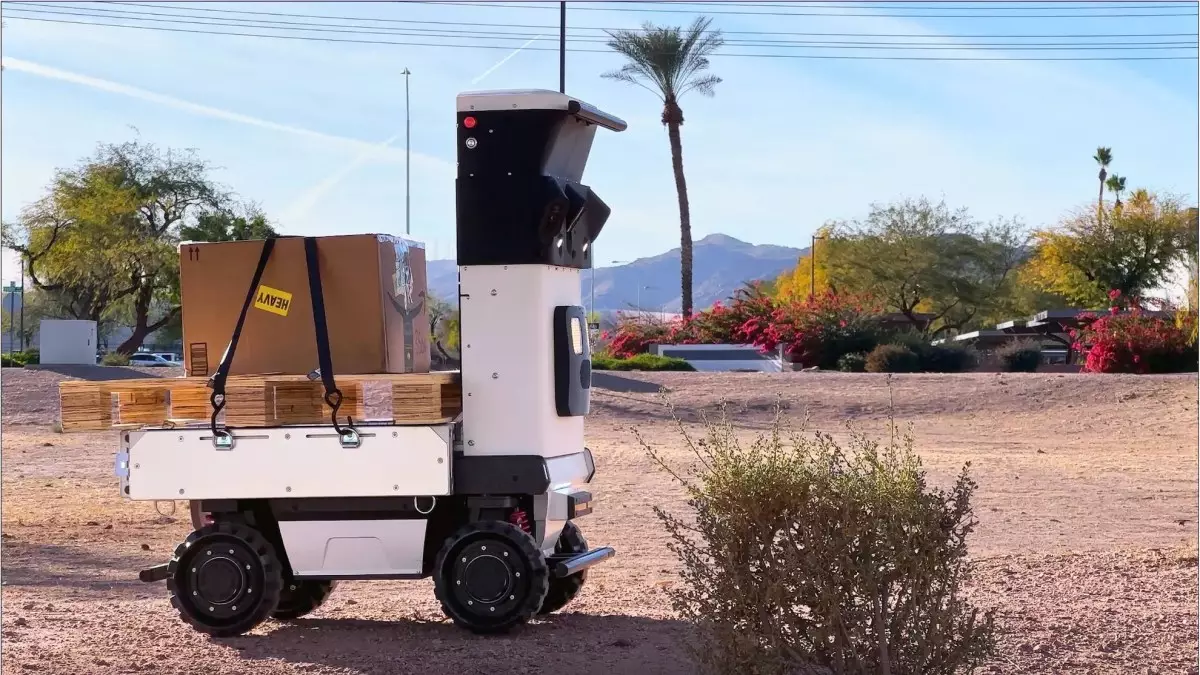In the rapidly evolving landscape of autonomous robotics, few startups have demonstrated as much foresight and adaptability as Cartken. Initially celebrated for their four-wheeled delivery robots on college campuses and through vibrant city streets in Tokyo, the company’s strategic pivot into industrial applications marks a pivotal turning point. This transition is not merely a diversification of business but a testament to Cartken’s visionary approach. Instead of remaining confined to last-mile logistics, the startup has recognized the untapped potential within manufacturing plants, research labs, and industrial facilities—spaces where efficiency and precision can significantly benefit from automated solutions. This shift underscores a profound realization: the true power of autonomous robots lies beyond simple delivery—they can fundamentally transform material flow and production processes.
Transforming Industrial Operations: Beyond Delivery Robots
The journey from food delivery to industrial applications was driven by organic demand. When leading industrial firms like ZF Lifetec reached out, Cartken didn’t dismiss these opportunities as peripheral; instead, they grasped them as growth catalysts. Their existing robots, such as the Cartken Courier—compact devices capable of holding 44 pounds—proved adaptable enough to transfer from bustling city streets to the complex interiors of factories. The real breakthrough came when these robots started transporting production samples, tools, and materials with remarkable reliability inside manufacturing environments. This approach not only streamlines workflows but also reduces human error and enhances safety—key factors that industrial stakeholders increasingly prioritize.
What is particularly compelling is the efficiency gains observed in these settings. As Bersch and his team discovered, their robots — trained on extensive delivery data — are capable of navigating both indoor and outdoor terrains seamlessly. Weather-resistant and obstacle-aware, these robots showcase an AI that learned from real-world urban deliveries, now deployed to optimize factory logistics. This ability to transfer skills from one environment to another exemplifies the versatility and scalability of Cartken’s AI engine, setting the stage for broader industrial adoption.
Innovative Product Line and Strategic Partnerships
Understanding that no single robot size or function can cater to all industrial needs, Cartken has diversified its fleet. The introduction of the Cartken Hauler, capable of carrying up to 660 pounds—a significant upgrade from the Courier—illustrates their commitment to tailor solutions. Coupled with the indoor-focused Cartken Runner and emerging robotic forklifts, their product lineup is designed to serve a spectrum of industrial tasks, from lightweight sample transport to heavy-duty material handling.
Strategic collaborations bolster their growth trajectory. The deepening partnership with Mitsubishi, particularly Melco Mobility Solutions, is a clear signal of industry validation. Mitsubishi’s involvement—particularly their certification support in Tokyo—has paved the way for large-scale deployments, with nearly 100 Cartken Haulers set to operate within Japanese industrial facilities. This alliance not only accelerates Cartken’s market penetration but also validates their technology’s readiness for complex, real-world industrial environments. The validation from such established corporations highlights the viability and readiness of autonomous robotics to step beyond niche applications and become critical components of industrial digital transformation.
Challenging Preconceived Notions About Robotics in Industry
While many skeptics believe robotics are limited to either high-tech laboratories or repetitive assembly lines, Cartken’s approach provokes a reconsideration of these assumptions. Their robots are designed with an adaptable navigation stack, capable of being reconfigured for different sizes and tasks. This flexibility signifies a shift in robotics development—moving away from rigid, specialized machines towards versatile, multifunctional agents capable of learning and adjusting in diverse environments.
Furthermore, the company’s approach questions the narrow view of robotics as mere automation tools for simple tasks. Instead, their technology embodies a strategic leverage point for companies seeking to enhance operational agility and reduce reliance on manual labor in hazardous or monotonous roles. With the robotics industry at a crossroads, Cartken’s success demonstrates that strategic innovation, combined with robust AI, can unlock new value streams in industries previously resistant to automation.
Perhaps most critically, Cartken’s trajectory reflects an understanding that the future of robotics in industry is not just about replacement but about augmentation. Their robots serve as collaborative tools that integrate seamlessly into existing workflows, enhancing human capabilities rather than sidelining workers. As automation becomes more tangible and accessible, industries that traditionally hesitated—like automotive, pharmaceutical, and chemical manufacturing—are now eyeing these robotics solutions as vital partners in achieving operational excellence.

